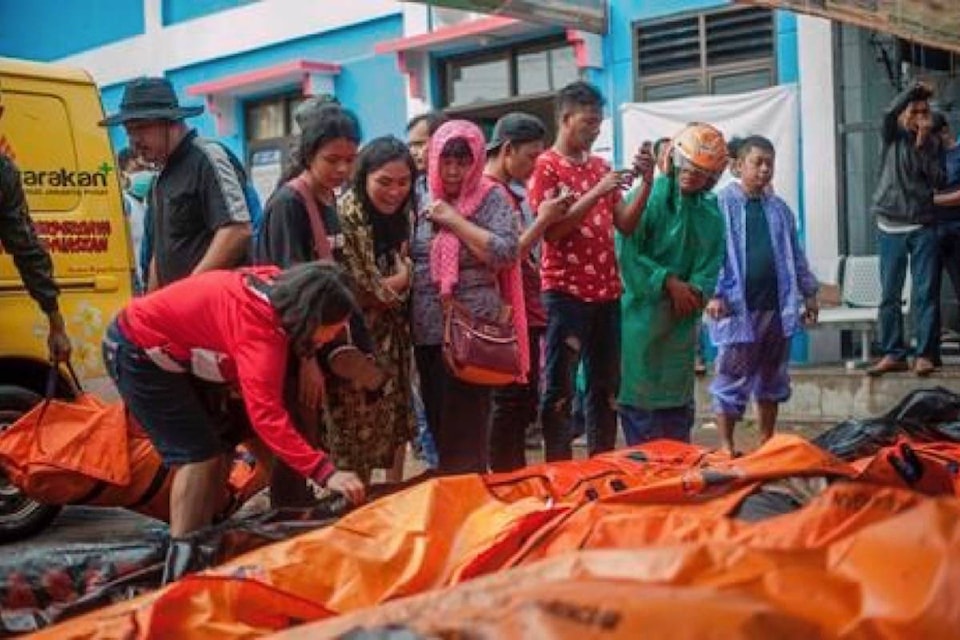Christmas celebrations traditionally filled with laughter and uplifting music were replaced by sombre prayers for tsunami victims in an area slammed by waves that hit without warning, killing more than 420 people and leaving thousands homeless in disaster-prone Indonesia.
Pastor Markus Taekz said Tuesday his Rahmat Pentecostal Church in the hard-hit area of Carita did not celebrate with joyous songs. Instead, he said only about 100 people showed up for the Christmas Eve service, usually attended by double that number. Many congregation members had already left the area for the capital, Jakarta, or other locations away from the disaster zone.
“This is an unusual situation because we have a very bad disaster that killed hundreds of our sisters and brothers in Banten,” he said, referring to the Javanese province. “So our celebration is full of grief.”
Church leaders called on Christians across Indonesia, the world’s most populous Muslim nation, to pray for victims of the tsunami.
The death toll had climbed to 429 on Tuesday with more than 1,400 people injured and at least 128 missing after the tsunami slammed into parts of western Java and southern Sumatra islands, said Sutopo Purwo Nugroho, spokesman for Indonesia Disaster Mitigation Agency.
Military troops, government personnel and volunteers were searching along debris-strewn beaches. Where victims were found, yellow, orange and black body bags were laid out, and weeping relatives identified the dead. Chunks of broken concrete and splintered wood littered the coast where hundreds of homes and hotels had stood.
The waves followed an eruption and apparent landslide on Anak Krakatau, or “Child of Krakatoa,” a volcanic island that formed in the early part of the 20th century near the site of the cataclysmic 1883 eruption of Krakatoa.
Indonesian President Joko Widodo, who faces what promises to be a tough re-election campaign next year, vowed to have all tsunami-detection equipment replaced or repaired.
Nugroho acknowledged on Twitter that the country’s network of detection buoys had been out of order since 2012 because of vandalism and budget shortfalls.
But the head of Indonesia’s Meteorology, Climatology and Geophysics Agency, Dwikorita Karnawati, said the tsunami was caused by Krakatau’s volcanic activity and so could not have been picked up by the agency’s sensors, which monitor conventional earthquakes responsible for more than 90 per cent of Indonesia’s tsunamis.
Karnawati said the tsunami was probably caused by the collapse of a big section of the volcano’s slope. Anak Krakatau been erupting since June and did so again 24 minutes before the tsunami, the geophysics agency said.
Indonesia, a vast archipelago of more than 17,000 islands and home to 260 million people, lies along the Ring of Fire, an arc of volcanoes and fault lines in the Pacific Basin.
The massive eruption of Krakatoa killed more than 30,000 people and hurled so much ash that it turned day to night in the area and reduced global temperatures. Thousands were believed killed by a quake and tsunami that hit Sulawesi island in September, and an earlier quake on the island of Lombok killed 505 people in August.
___
Associated Press writers Margie Mason and Ali Kotarumalos in Jakarta, Indonesia, contributed to this report.
Niniek Karmini, The Associated Press
